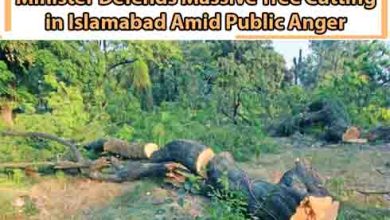#CanalWater at arsenic-ridden village safer than #groundwater
#SAHIWAL: The water of Canal 12-L water is more suitable and safer for water supply schemes than the groundwater coming from even 200-300 feet down at Chak 49/12-L where a high level of arsenic has been discovered in the groundwater streams.
This is the finding of a recent survey published by a local chapter of the #WaterQualityLaboratory, #Pakistan Council of Research in #WaterResources (#PCRWR), Islamabad.
Report said one can witness all forms of medical dysfunctionality among the 5,200 rural population of Chak 49/12-L and surrounding villages of tehsil Chichawatni by taking a high level of arsenic slow-poisoning through the groundwater.
Report said arsenic-contaminated groundwater in the village is not safe under #WorldHealthOrganisation (WHO) guidelines and also the measures adopted by the American Public Health Association Protocols (APHA, 2017) for the US citizens. The permissible concentration of arsenic must be under 10 ppb as per the WHO but out of total 33 water samples collected from Chak 49/12-L, 20 samples had high contaminations of arsenic. The maximum value of arsenic was found to be 228.9 ppb.
The data also showed that drinking water from deep turbines (200-300 ft) had elevated concentrations of arsenic up to 173 ppb. Interestingly, the feeding water from the turbines for the village water filtration plant showed arsenic contamination of 67.45 ppb and the treated water from the same filtration plant also had arsenic contamination of 35.9 ppb, greater than the safe limit. Only three samples collected from submersible pumps installed on the bank of the 12-L Canal were found safe with a maximum level of 2.67 ppb.
The report said water from the canal and canal bank were found safe because the surface water samples collected from the canal were found having 4.34 ppb, which falls within safe limits of the WHO guidelines.
PCRWR Assistant Director Dr Sajjad Ahmad, the in-charge of the lab in Sahiwal, says technically it is safe that future water supply schemes for village residents must not pump the groundwater but get it from the irrigation water of Canal 12-L.
“There is one caution that hydrants may be allowed for human consumption only after ensuring safety from the microbiological contamination by adopting necessary laboratory tests,” he adds.
Reports said the presence of arsenic was discovered by village inhabitants when a skin specialist asked them to analyse drinking water samples from any water testing laboratory. Later, on the recommendation of the Judicial Water and Environmental Commission, the #PCRWR was asked to do water analysis.
Dr Sajjad says the total area is divided into 20 segments and one sample is collected from each segment.
According to the sampling design, a total of 33 water samples were collected from various sources. Twenty-two samples from domestic pumps, one sample from village water filtration plant, one from treated water from the same water filtration plant installed in the center of the village fed through groundwater, six samples from turbines, one sample from the canal and three samples from submersible (hydrants), which installed at canal bank.
All the samples were analysed on atomic absorption (hydride generation mode vario 6) to check arsenic contamination at the National Water Quality Laboratory #PCRWR, Islamabad. The results showed that out of 33 water samples, only five water samples had arsenic levels less than 10 ppb, the permissible limits of WHO, seven groundwater samples had arsenic levels higher than 10 ppb but less than 50 ppb while 20 had high contamination of arsenic i.e. up to 228.9 ppb.
Three samples were collected from the canal bank with depths from 90 to 120 ft. It was found that all samples had an arsenic level 4.32 ppb, which is safe according to WHO. The development of a water supply scheme from the canal water is a reliable and sustainable solution for safe drinking water to the community as compared to developing water supply schemes from groundwater sources, Dr Sajjad further added.
The report has been sent both to the district government and Judicial Water and Environmental Commission, Lahore for further action.
Dr Sajjad said the village’s central area spread over a 1.5 km radius was the most affected by arsenic. He said there are dangers highly arsenic groundwater streams would spread among surrounding groundwater and badly affect surrounding villages groundwater with high levels of arsenic.
Chak 49/12-L is located in tehsil #Chichawatni, district Sahiwal, having a population of 5,200 persons and 500 houses. The main source of drinking water is groundwater. Hand pumps and domestic electric pumps are frequently used for groundwater pumping. Most of the village irrigation is done through tube wells having 200-300 depth and Canal 12-L irrigation water.







